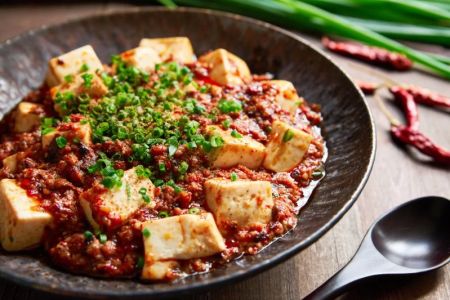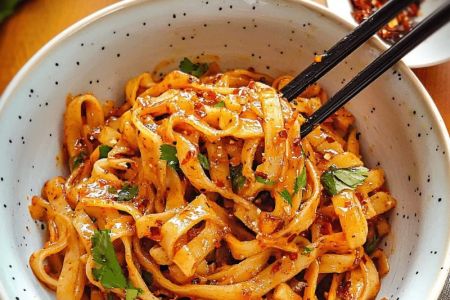Overview of Chinese Food Nutrition for Restaurants in the USA
As Chinese cuisine continues to grow in popularity across the United States, many restaurant owners are becoming more conscious of offering healthy and nutritious options to meet the diverse dietary needs of their customers. Understanding the nutritional content of Chinese food is crucial for restaurant owners looking to serve balanced meals and maintain a strong reputation among health-conscious consumers. This article will delve into the nutritional aspects of Chinese food, highlight important considerations for restaurants, and provide practical advice for optimizing your menu to cater to diverse dietary preferences in the U.S.
Nutritional Benefits of Chinese Food
Chinese food offers a variety of health benefits when prepared with fresh, high-quality ingredients. Many traditional Chinese dishes feature a balance of proteins, vegetables, and carbohydrates, providing essential nutrients for a healthy diet. For example, dishes that incorporate tofu, vegetables, and lean meats are rich in plant-based protein, fiber, and essential vitamins and minerals. Additionally, Chinese cuisine often uses ingredients like ginger, garlic, and soy sauce, which are known for their anti-inflammatory and antioxidant properties.
The Role of Vegetables and Protein in Chinese Dishes
Vegetables such as bok choy, Chinese broccoli, and snow peas are commonly used in Chinese dishes. These vegetables are low in calories but packed with vitamins like Vitamin A and C, as well as fiber, which supports digestive health. Pairing vegetables with lean proteins like chicken, shrimp, or tofu can create a balanced meal that provides all the essential amino acids needed for muscle repair and overall health.
Striking a Balance Between Carbs and Protein
Rice and noodles are staples in Chinese cuisine, and while they provide a good source of carbohydrates, it’s important to balance these dishes with protein and vegetables. A classic example is the popular "chop suey" or stir-fried vegetables with rice, which balances the energy from rice with the nutrition from protein and vegetables. For restaurants looking to cater to health-conscious customers, offering whole-grain options like brown rice or quinoa can help increase the fiber content and make the dish more filling and nutritious.
Optimizing Your Chinese Food Menu for Health-Conscious Diners
When optimizing your Chinese food menu for nutrition, it’s important to consider both the ingredients you use and the way dishes are prepared. Health-conscious diners are looking for options that are not only delicious but also nutritionally balanced. Here are some tips to help you improve the nutritional value of your restaurant’s menu:
Reducing Fat and Sodium in Chinese Dishes
Many Chinese dishes, especially those that are deep-fried or stir-fried in oil, can be high in fat. To make these dishes healthier, consider using less oil or opting for healthier cooking methods like steaming or grilling. Additionally, traditional Chinese dishes often contain high levels of sodium due to ingredients like soy sauce and hoisin sauce. Offering low-sodium soy sauce or reducing the amount of sauce in dishes can help make your menu more appealing to health-conscious customers.
Offering Gluten-Free Options
With the rise in gluten intolerance and sensitivity, offering gluten-free Chinese food options is a must for many restaurants. Thankfully, many traditional Chinese ingredients such as rice, tofu, and vegetables are naturally gluten-free. You can also find gluten-free soy sauce and other gluten-free ingredients that will allow you to cater to those with dietary restrictions without compromising on taste or authenticity.
Portion Control and Smaller Plates
Another way to improve the healthiness of your menu is by offering smaller portion sizes. Overeating can be a concern when serving dishes with larger portions. Consider offering half-portions or small plate options that allow customers to enjoy a variety of dishes without overindulging. You could also offer a "light" menu with dishes that focus on lean proteins, vegetables, and lighter sauces to attract customers looking for a healthier alternative.
Real-Life Examples of Healthier Chinese Food Options
Many restaurants across the United States have begun incorporating healthier alternatives into their menus. For example, some Chinese restaurants now offer vegetable stir-fries with tofu or lean chicken breast, paired with brown rice instead of white rice. Others have opted to introduce steamed dumplings as a lighter option compared to their fried counterparts. These changes are not only beneficial for health-conscious customers but also help to attract a broader range of clientele.
A Success Story: Healthy Chinese Cuisine at a San Francisco Restaurant
A popular Chinese restaurant in San Francisco, known for its authentic flavors, recently revamped its menu to offer more nutritious options. The owner, recognizing the growing demand for healthier food choices, introduced a range of dishes with low-sodium soy sauce, steamed options, and gluten-free alternatives. This not only boosted the restaurant’s appeal to health-conscious diners but also helped build a loyal customer base that appreciated the balance of flavor and nutrition. By making these changes, the restaurant saw a significant increase in customer satisfaction and repeat business.
Conclusion: Enhancing Chinese Food Nutrition for a Healthier Future
Incorporating healthier options into your Chinese food menu is a smart business decision that can help you cater to a growing customer base that values nutrition. By focusing on balance, reducing fat and sodium, and offering gluten-free options, you can provide dishes that are both delicious and nutritious. As a restaurant owner, being mindful of the nutritional content of your menu and making small adjustments can have a positive impact on both customer satisfaction and your bottom line. For the best range of Chinese food products and services to enhance your menu, visit Chinese Food for quality ingredients and expert recommendations.







